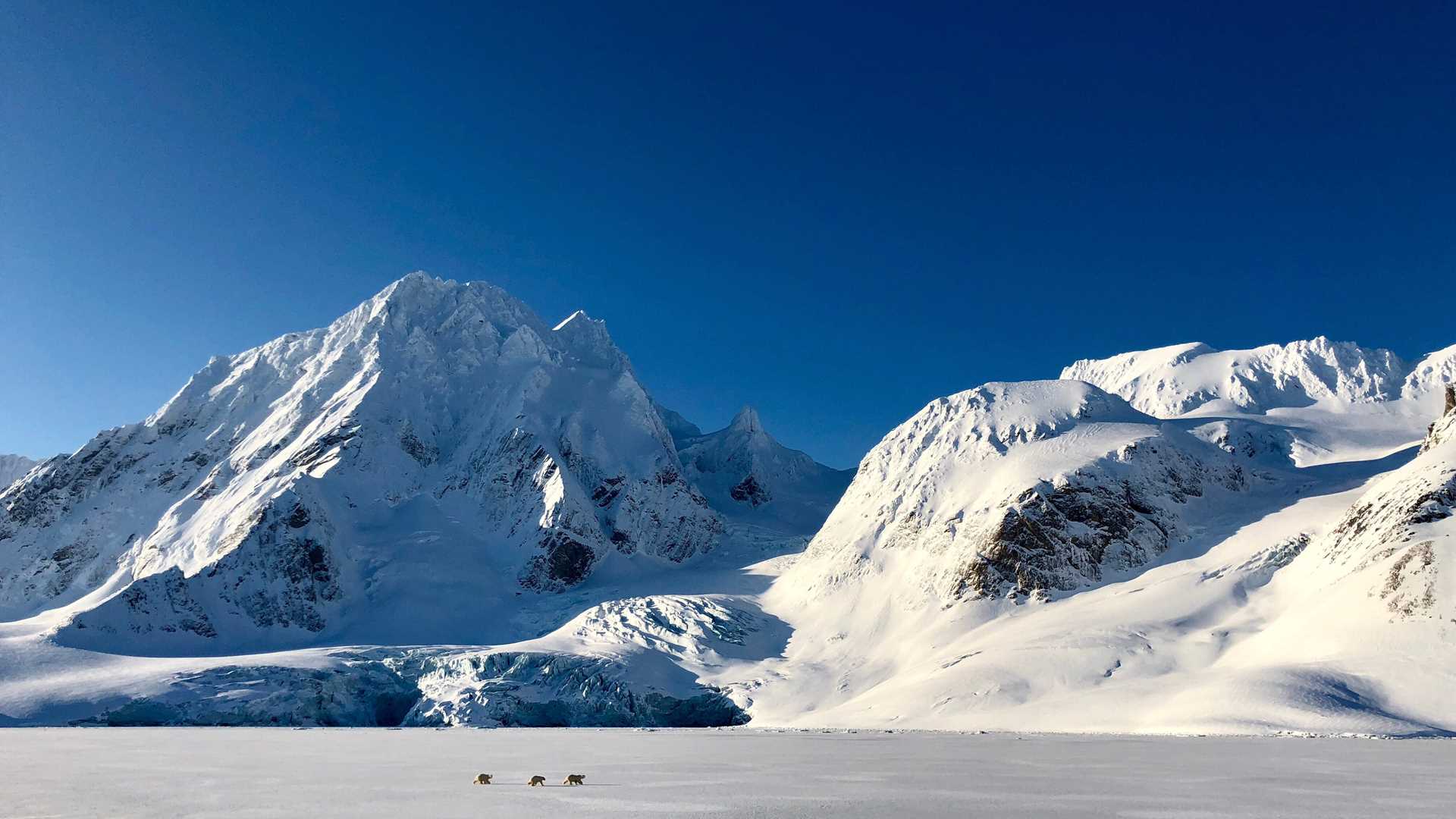A formidable voice calling for understanding and the preservation of the polar regions and the Earth, Will Steger is best known for his legendary polar explorations. He has traveled tens of thousands of miles by kayak and dogsled more than 50 years, leading teams on some of the most significant polar expeditions in history. Last year, he returned to Antarctica with us as a Global Perspectives Guest speaker. We had the pleasure to talk with Will about his new documentary, which was partially filmed aboard National Geographic Explorer. Get Inspired By Photos, Videos, Webinars, Stories, And Exclusive Offers. Sign Up
You’ve spent so much of your life in the northern and southernmost regions of our planet. What draws you to high latitudes?
In our planet’s highest latitudes, you get to places that are beyond wilderness. The purity, the purity of the landscapes draws me. They’re so wild. You can’t compare them to anything else. And the wildlife. In Antarctica, the wildlife’s in the water and on the coastline. But in the north, it’s everywhere.
How have the polar regions changed over the decades?
Over my lifetime of polar exploration, I’ve become an eyewitness to climate change. The first 25 years, prior to 1990, we had what I would describe as normal winters. Since then, I’ve experienced it as the ice began thawing and melting.
What’s happened had been predicted by scientists back in the 1980s, that as carbon dioxide continued to climb, the ice at high latitudes would begin melting. Since the 1990s, we’ve seen major openings in the Arctic Ocean’s ice cover, then in 2007 a major breakup of the ice during the Arctic summer. All of the ice shelves I’ve traversed are melting. Many of them are gone: Ward Hunt, Northern Ellesmere, Antarctica’s Larsen A and B. Now the Larsen C ice shelf is melting. These are beyond mere calving events. The pattern in Antarctica continues southward, southward, into what had been the coolest regions.
In 2002, I saw the news that the Larsen B ice shelf was disintegrating. It had taken me 14 days to cross it. When I first saw it from the mountains in Antarctica, it was one of the largest Earth features I had ever seen. To read in the newspaper in 2002 that it had broken up, was gone—that changed my life. I moved to the city, started a non-profit, Climate Generation, to educate the public about what was happening. We do lots of work in climate policy, energy policy, and we’ve been able to help steer my home state of Minnesota in the right direction.
Tell me about the film you worked on while aboard the National Geographic Explorer.
I decided to make a film about the breakup of the ice shelves. I’ve been telling this story for many years. It’s not a doomsday message, but people have to look at the reality of what’s happening. No one’s confronting what’s right around the corner for us. I wanted to create a film to tell this story, and we gathered footage while at sea aboard National Geographic Explorer.
Would you say the first step was the hardest on many of your extreme journeys?
I always get asked how I do the sorts of things I do. I say you can too, just put on your boots and do it. There are all sorts of excuses not to do the tough things, but you have to put on your boots.
My dad was an entrepreneur, and we had nine kids in our family. From 15 years old, I was given complete freedom to do what I wanted so long as I could pay for it. Because of the way I was raised, I didn’t see barriers. I’ve covered thousands of miles in harsh conditions. Taking on some tough policy changes in Minnesota that had to get made, I gave a hundred and more slideshows to get it done.
You have to be realistic, of course. I’m not reckless in what I do, but I’ll sacrifice for what I do. I always wanted to break ground in education, particularly online education. I’ve always broken ground in whatever I’ve done—major expeditions to the polar areas, of course, but I’ve always taken on the extremes. That’s where the learning happens.
What was your inspiration to devote yourself to a life of exploration?
For a lot of young people, the Geographic gave us the pictures around which we wrapped our dreams. I played ice hockey. That was the biggest sport where I lived. When I was 13, I traded my hockey skates for a sled full of National Geographic magazines. We bargained back and forth, a friend and I, and I’ll never forget the day in February when I struck a deal and pulled a sled-load of Geographic’s into the living room of my house.
Through National Geographic, I took my kayak trips, my climbing trips. I ended up getting the La Gorce Medal and becoming an Explorer-in-Residence with National Geographic, writing three articles for the magazine. It shows me the power of having a dream as a kid and following it. People trip themselves up on their dreams within their own minds, convince themselves something can’t be done. If it feels good, if it’s you, what you’re doing, then follow that. That’s what I tell people, particularly younger people. That’s your heart. If you follow that, working 16 hours a day is a pleasure, it’s not like punching a clock.
Why should travelers go to Antarctica?
Antarctica is unlike anything else you’ll see in your lifetime. It’s such an incredible continent, and it’s very important, too. Whoever comes to Antarctica becomes an ambassador for it. You’re inspired by it. It’s so important to have visitors come and see it, experience it for themselves. Once you visit, you can never forget it.




